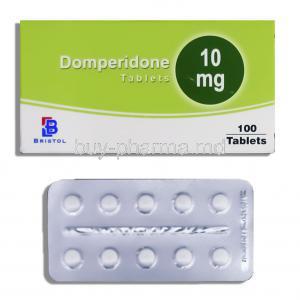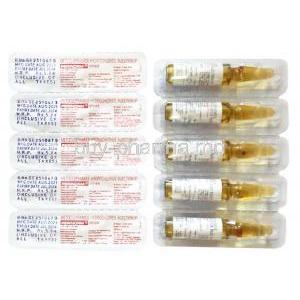Pantoprazole
Uses
How it Works
Common Side effects
Patients who take Pantoprazole may suffer from such side effects;
Diarrhea,
Vomiting,
Abdominal pain,
Vonstipation,
Headaches,
Skin rashes
Domperidone
Uses
How it Works
Common Side effects
Patients who take Domperidone may suffer from such side effects;
Dry mouth
Fainting,
Palpitations
Headaches,
Diarrhoea
Uses
Pan-D is a medication prescribed to treat gastroesophageal reflux disease (GERD) and peptic ulcer disease. It reduces acid production in the stomach while opening up its gas passageway, relieving heartburn, indigestion, and stomach discomfort.
Additionally, it helps prevent the development of a peptic ulcer. However, remember that this medicine must only be taken as prescribed by your healthcare provider and should only be taken when instructed.
Dosage for this medication depends on your medical history, body weight and symptoms. For optimal effectiveness, take it an hour prior to food.
Before beginning to take this medication, let your doctor know if you have a history of liver or kidney diseases as it may impact magnesium levels in your blood.
How it Works
Pan-D works by decreasing stomach acid, relieving symptoms of heartburn and acid reflux. It also eases stomach irritation and pain while healing existing ulcers or esophageal lesions. Though effective, this medicine may cause side effects like diarrhoea, dry mouth and headaches that will gradually diminish as you get used to taking it. If you experience any of these effects, consult your doctor immediately; otherwise, take this medication exactly as prescribed for maximum benefits. Pregnancy and breastfeeding should be avoided as Pan-D can harm an unborn baby. If you suspect an allergic reaction to Pan-D, contact your doctor right away. Additionally, avoid driving while taking this drug as it may reduce alertness or impair vision.
Introduction
Pan-D is an anti-acidic medication designed to alleviate acidity symptoms such as heartburn and stomach pain. Additionally, it helps ease gas passageways to lessen stomach discomfort.
This medication comes in capsule form and should be taken without food. Follow your doctor's instructions regarding dosage and time frame when taking this medicine.
Dosage and administration
Pan-D Capsule is an anti-reflux medicine that decreases acid production in the stomach, relieving symptoms such as acidity, heartburn and stomach pain. Furthermore, it may reduce gastric ulcers and peptic ulcer disease.
Domperidone and pantoprazole are used in combination to treat nausea and vomiting. The former suppresses acid production in the stomach, while the latter lessens nausea and vomiting.
This medication is mainly prescribed to treat gastroesophageal reflux disease (GERD). This condition occurs when stomach contents back up into the esophagus.
Pan-D is a medication prescribed to treat acidity and gastroesophageal reflux disease (GERD). It can reduce symptoms such as heartburn, stomach pain, difficulty swallowing, vomiting; it also helps reduce feelings of fullness in the stomach and bloating after eating a heavy meal.
For optimal effectiveness, take this medication one hour prior to eating a meal. You may take it either once or twice daily depending on your doctor's prescription.
Drug-Drug Interactions: It should not be prescribed in patients with a history of C. difficile-induced colitis, liver disease, bone fractures or low Vitamin B12 and magnesium levels.
Long-term usage may lead to weak bones and a deficiency of minerals like calcium. Make sure you get enough dietary calcium and magnesium through food sources or supplements as prescribed by your doctor.
Interaction
Pan-D is an herbal remedy that reduces stomach acid production and relieves symptoms of heartburn. It's a dietary supplement taken once daily with food, and it may also be used as treatment for GERD--a chronic condition which causes excess acid production in the stomach--when taken as directed by your healthcare professional.
Although the exact mechanism of action remains uncertain, we have discovered that it acts by inhibiting pantothenate biosynthesis. This in turn affects cell growth rates.
We have also identified that mutations responsible for resistance to PZA on Mtb PanD primarily involve changes to two loops surrounding the active site. This subtle but significant alteration has a substantial effect on POA's affinity for PanD and how long inhibitors remain active.













